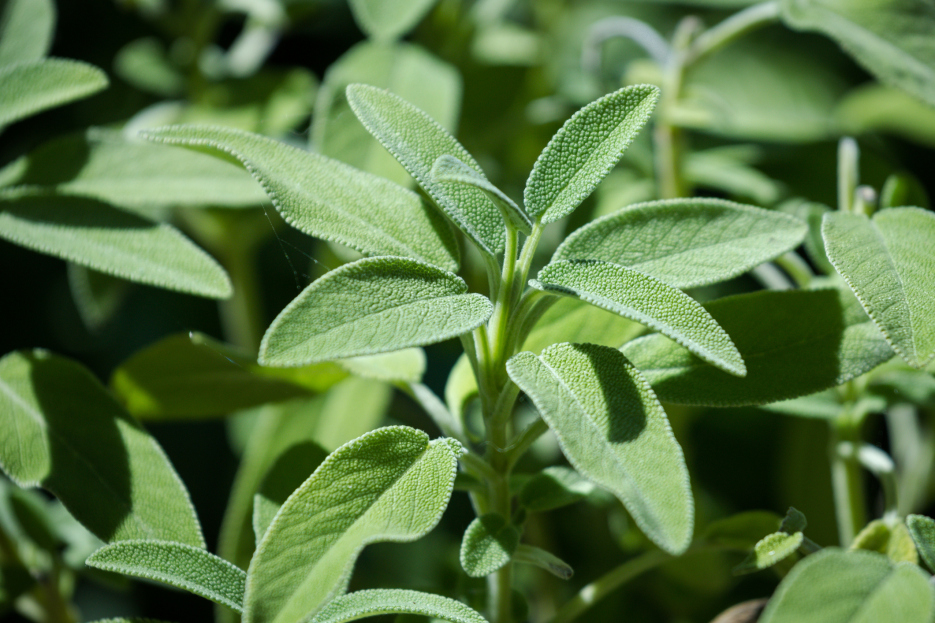
Sage is a popular perennial herb known for its earthy flavor and medicinal properties. Widely used in cooking, herbal remedies, and even ornamental gardening due to its attractive, velvety leaves. Easy to grow and care for, sage can be a great addition to your herb garden. Below is a comprehensive guide on how to grow and care for sage.
Sage thrives in full sun, needing at least 6-8 hours of direct sunlight each day. If growing sage indoors, place it by a bright, sunny window. While it can tolerate partial shade, it’s best grown in full sun to promote stronger growth and enhanced flavor.
Sage doesn’t require a lot of fertilizer. A light application of a balanced, all-purpose fertilizer once at the beginning of the growing season is ideal. If grown in containers, feeding every 6-8 weeks with a diluted liquid fertilizer can help maintain your plants growth. Over-fertilizing can cause the plant to become leggy and less flavorful, so less is more when fertilizing your sage.
Sage prefers to be on the drier side, and overwatering can cause root rot. Water when the top inch of soil feels dry to the touch, usually once a week. If grown outdoors, they can withstand some drought, but regular, moderate watering during especially hot weather will help it thrive.
Make sure the soil has good drainage, as they does not tolerate soggy conditions. If watering into a pot without drainage holes, be sure to discard any excess water to prevent root rot or pests.
Sage grows best in well-draining, sandy, or loamy soil with a slightly acidic to neutral pH of 6.0 to 7.0. It’s important that the soil drains well to prevent waterlogging. When grown in containers, use a high-quality potting mix and ensure the pot has drainage holes. Re-potting is usually needed every 1-2 years, especially when the plant becomes root-bound or if the soil quality diminishes.
Sage is a hardy plant that thrives in temperatures between 60°F and 70°F (16°C to 21°C). It can tolerate warmer temperatures, but in colder climates (below 20°F or -6°C), the plant may need to be covered or brought indoors for winter protection. It can be perennial in USDA zones 5-9 but will need extra care in harsher winters.
Sage prefers low to moderate humidity and grows well in dry climates. High humidity can promote fungal growth, so it’s important to ensure good airflow around the plant, especially in indoor settings. Avoid misting your plant or keeping it in overly humid environments to prevent fungal issues like powdery mildew.
Sage can be propagated by seeds, cuttings, layering, or division. Cuttings are the most popular method. Take a 4-6 inch cutting from a healthy plant, remove the lower leaves, and place it in water or moist soil until roots develop. Seeds can also be sown in the spring, but cuttings tend to establish more quickly.
Regular pruning helps maintain a healthy, bushy sage plant. Pinch off the growing tips throughout the season to encourage branching and prevent legginess. After flowering, prune back about one-third of the plant to promote new growth and extend its life. Cutting back the plant in early spring or fall will also help maintain its shape and health.
Sage is relatively pest-resistant but can occasionally attract aphids, spider mites, or whiteflies. These can be controlled by washing the plant with water or using organic insecticidal soap. Fungal diseases such as powdery mildew can occur in high humidity, so ensure good airflow and avoid overwatering. Root rot is another issue to watch for if the plant is sitting in waterlogged soil.
Sage is generally safe for cats and dogs when ingested in small amounts. However, large quantities may cause digestive issues. While it’s non-toxic, it’s best to monitor pets around the plant to prevent overconsumption.
Sage thrives in full sun, requiring 6-8 hours of direct sunlight per day.
Water sage when the top inch of soil feels dry, usually about once a week. Ensure the soil drains well.
Sage grows best in well-draining, sandy, or loamy soil with a pH of 6.0-7.0.
Yes, sage can be grown indoors as long as it receives enough sunlight, preferably near a south-facing window or with grow lights.
Sage can be propagated by seeds, cuttings, layering, or division, with cuttings being the most popular method.
Sage thrives in temperatures between 60°F and 70°F (16°C to 21°C) but can tolerate warmer conditions.
Regularly pinch off tips to encourage bushy growth. After flowering, prune back about one-third of the plant.
Sage can attract aphids, spider mites, and whiteflies. Fungal issues like powdery mildew can occur in high humidity.
Sage doesn’t require much fertilizer. A light feeding once or twice a year is sufficient for outdoor plants.
Yes, sage is generally safe for pets, though large amounts may cause digestive upset.